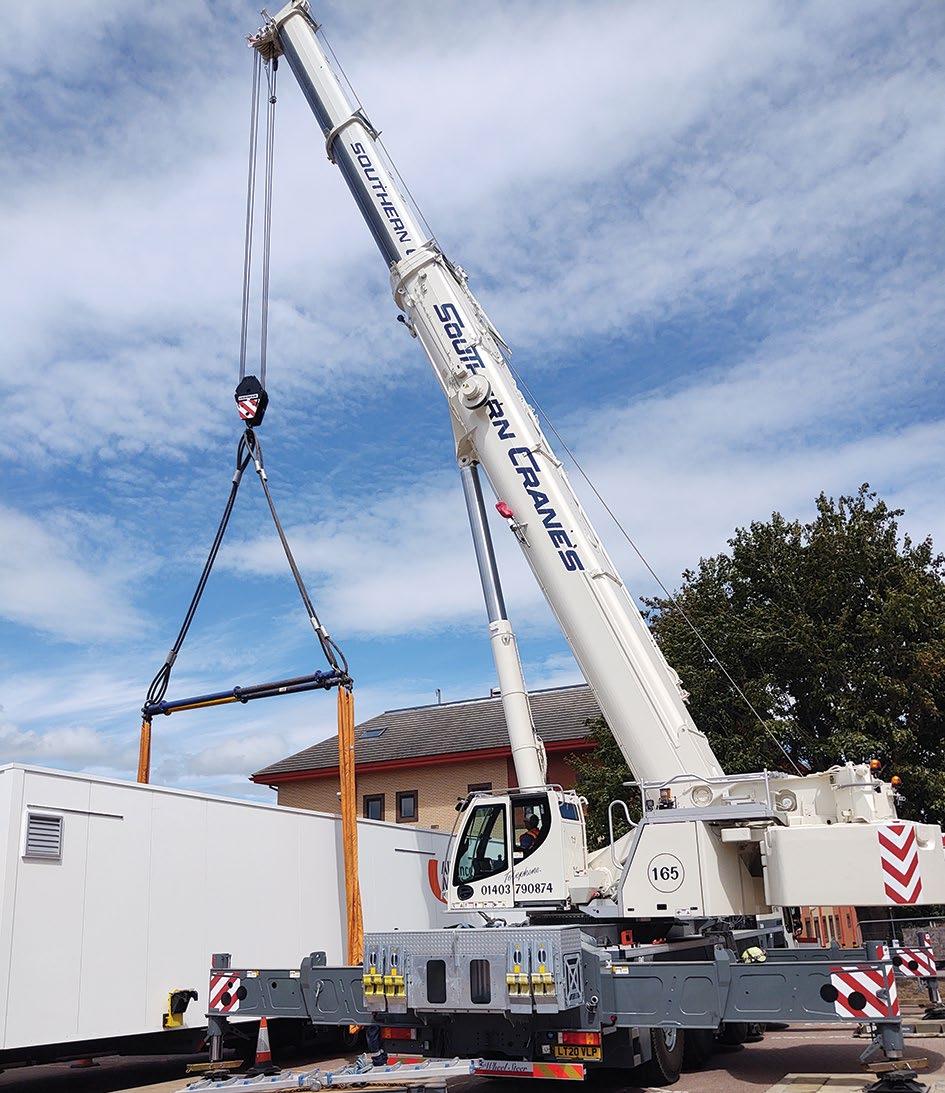
3 minute read
American exceptionalism
In our last issue, we looked in detail at what it takes for cranes to travel easily on European roads. Manufacturers strive to include as much counterweight as possible within 12 tonne axle loads – 16.5 tonnes in some markets – while working within national permit restrictions, taking note of tighter restrictions in some major cities. While this may be a point of irritation for crane owners and designers, it is nothing compared to the challenges facing their North America counterparts. Will North reports.
Travelling across the vastness of North America has always been a challenge. While driving a crane on the highway is no Oregon Trail, it remains a consistently tough journey for a mobile crane. Over half of the cranes in this class will need to be equipped with trailing booms. The US road network has multiple layers of federal, state and local municipality regulations, so crane owners try to configure the crane for the most stringent restrictions along the route. When operating in their regional market, they may still face two to three different sets of state/local regulations.
May roading considerations encourage North American crane buyers to consider a Link-Belt? The 150 tonne/175 ton 175|AT offers a wide range of roading configurations for North America, which are not always available on European built cranes. Product manager Brian Smoot says US/ Canada roading configurations play an important role in the Link-Belt design process. “The key is a flexible design that meets the needs of the broadest number of crane buyers. While many will require a boom dolly, others will travel with the boom over the front, so the boom base section is equipped with standard dolly lugs that trailer manufacturers design to.”

Product marketing specialist Andrew Soper adds: “Every day we work with dealers and customers on how to move cranes. Years of experience with moving lattice boom truck cranes and Rough Terrains are invaluable. There is no single axle limit to hit, instead, we have 50 different state and nine different provincial standards. And that is just the start. The state of Illinois has one regulation. But within the state, the Greater Chicago area has other rules. Our cranes need to work for Illinois, but also do what Chicago requires.”

Unlike earlier models, such as the ATC-3210 and ATC-3275, which had single person carrier cabs, the 175|AT features a full width All Terrain type cab as well as a new superstructure cab. It also features a single engine design and moves away from a two – three-axle split, to a more traditional one-two-two axle grouping.
While the company wouldn’t be drawn on which models will come next, it did confirm that at some point the older ATC models will be phased out and those new models will use the same nomenclature and key design elements as the 175|AT.

Shrink to fit
It can be costly to move cranes in North America, so versatility in terms of travel configurations can be critical. When Smith Erectors of Markle, Indiana, looked at a new 150 tonne crane, it wanted something big enough for heavy rigging work, but adaptable for easy transport. President Garland Smith said: “We talked for the last year or so about getting this 175 ton (150 tonne) Link-Belt crane to fill a gap we had between the 90 ton HTC- 8690 truck crane and 275 ton ATC- 3275 All Terrain – both from Link-Belt. We looked at a 110 ton HTC-86110, but realised that, with the transport options on the Link-Belt 175|AT, we could run it down the road like a 110 ton crane, and as we do a lot of heavy rigging we knew we probably needed the bigger machine.”
The company used the new 175|AT on a bridge replacement project in Berne, Indiana, the crane can run on Indiana roads without a dolly if the counterweight is carried separately. Once on site with counterweight installed the crane lifted the 17 metre/24 tonne concrete beams into place and return to the yard, all in a single day.











